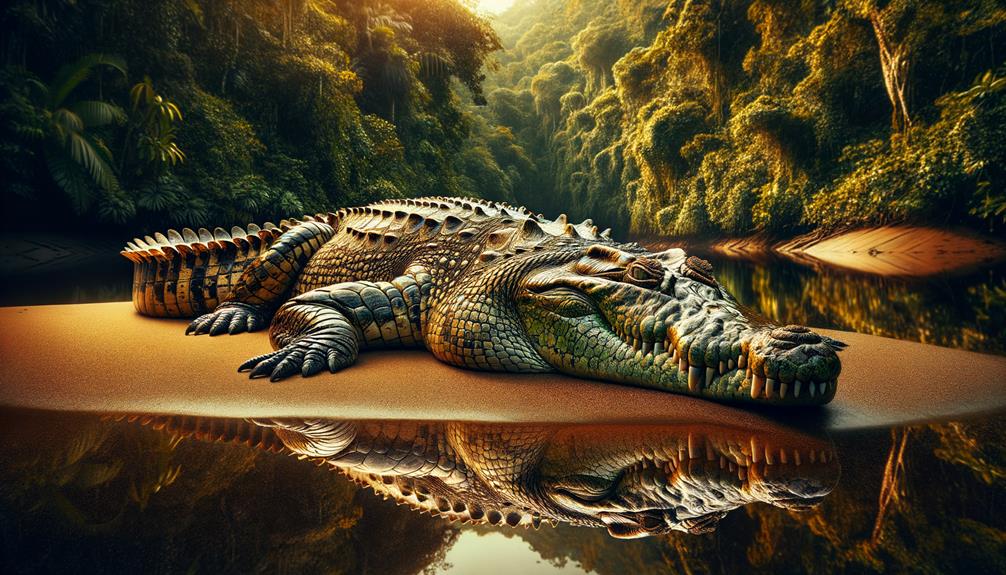When I delve into the world of highly venomous reptilian predators, I'm struck by their incredible killing power. The Black Mamba, found in Sub-Saharan Africa, combines breathtaking speed with venom that rapidly incapacitates its prey. In Australia, the Coastal Taipan's venom is extremely potent, while its inland cousin, the Inland Taipan, has the most toxic venom known to science. The majestic King Cobra, revered across Asia, uses its long reach to deliver deadly neurotoxins. Meanwhile, the Eastern Brown Snake dominates eastern Australia, responsible for many snakebite fatalities. Each of these creatures exemplifies the intricate balance of beauty and danger in nature, inviting a deeper exploration of their habitat.
Key Takeaways
Native to Sub-Saharan Africa, the Black Mamba is a force to be reckoned with, thanks to its potent venom and ability to move at speeds of up to 20 km/h.
The Coastal Taipan, found in northeastern Australia and southern New Guinea, packs a deadly punch with its extremely potent venom, which contains neurotoxins and coagulants.
In central-eastern Australia, the Inland Taipan reigns supreme, its venom capable of causing rapid paralysis and blood clotting issues with a subcutaneous LD50 of just 0.01 mg/kg.
The King Cobra is a snake like no other, its powerful neurotoxic venom making it a formidable predator and one of the longest venomous snakes in the world.
Lastly, the Eastern Brown Snake, native to eastern Australia, is a highly venomous species responsible for the majority of snakebite fatalities in its range.
Black Mamba
The black mamba, native to Sub-Saharan Africa, is feared for its potent venom and impressive speed, reaching up to 20 km/h. As one of the deadliest reptiles, its venom contains a mix of neurotoxins, cardiotoxins, fasciculins, and calciseptine. The venom's lethality is demonstrated by its subcutaneous LD50 of 0.32mg/kg and intravenous LD50 of 0.25mg/kg.
Symptoms of a black mamba bite appear rapidly, usually within 10 minutes. These symptoms include dizziness, difficulty breathing, and paralysis. Without prompt medical treatment, an untreated bite is usually fatal, making the black mamba a highly feared snake in its native domain. Notably, the black mamba always injects venom when it bites, ensuring its effectiveness as a predator.
It's crucial to exercise caution when encountering this fast-moving serpent in the wilds of Sub-Saharan Africa. The black mamba's deadly potential is a reminder of the importance of respecting and understanding this fascinating yet perilous creature in the field of herpetology.
Coastal Taipan
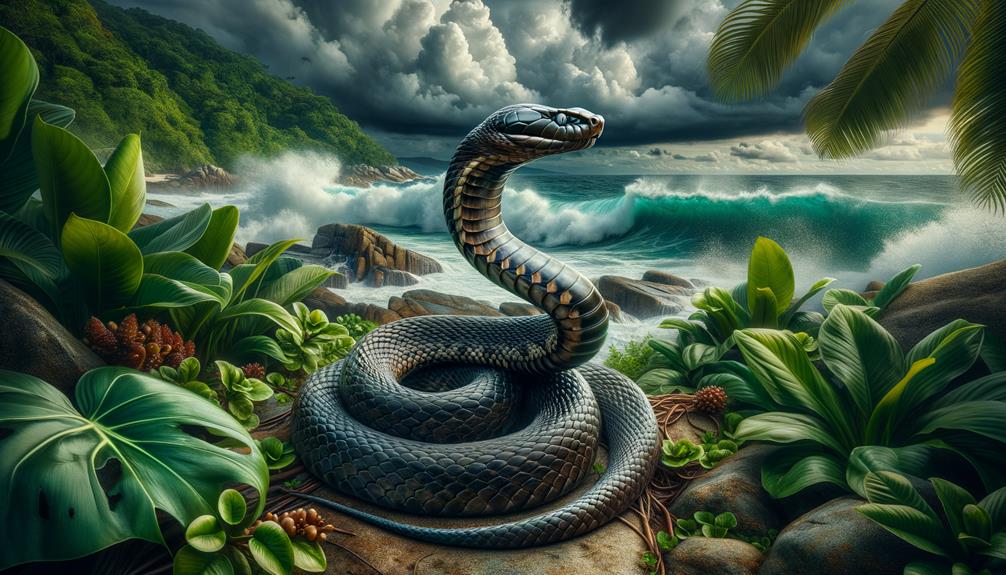
The coastal taipan, found in northeastern Australia and southern New Guinea, has a reputation for being one of the deadliest snakes in the world. Its venom is extremely potent, containing neurotoxins and coagulants that can be fatal to humans if not treated promptly.
Encountering a coastal taipan is a serious matter. A single bite can deliver enough venom to cause severe harm, making it a reptile that demands respect. While it's not typically aggressive towards humans, it will defend itself if threatened or provoked. Unfortunately, its bites are responsible for several human fatalities each year in its native range.
The coastal taipan's ability to deliver a large amount of venom in a single bite is a stark reminder of the importance of being aware of our surroundings when venturing into the wilds of northeastern Australia and southern New Guinea. It's crucial to recognize the risks that come with sharing the land with such a deadly species.
Inland Taipan
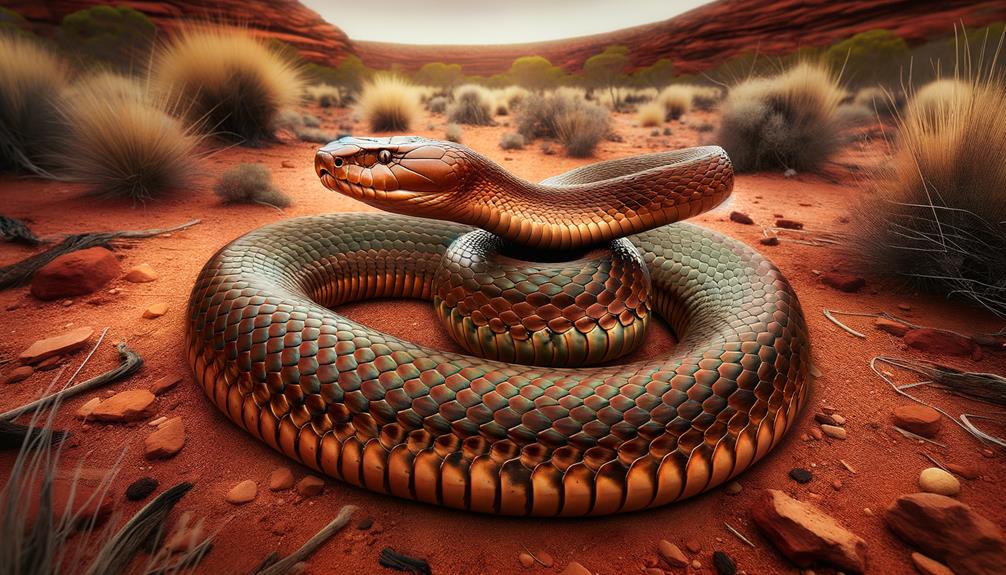
Despite its fearsome reputation, the inland taipan, native to central-eastern Australia, is an elusive and rarely encountered predator. This highly venomous snake inhabits remote areas, making human encounters extremely rare. However, its potent venom is nothing short of astonishing.
The venom of the inland taipan can cause rapid paralysis, disrupt blood clotting, and lead to a high fatality rate if left untreated. In a single bite, it can deliver enough venom to kill up to 100 people. The venom's neurotoxins quickly attack the nervous system, solidifying this deadly predator's fearsome reputation.
A key aspect of the inland taipan's venom is its remarkable potency, with a median lethal dose of just 0.01 mg/kg subcutaneously capable of being fatal.
Interestingly, despite its deadly venom, the inland taipan is generally shy and avoids human contact.
The venom contains both neurotoxins and coagulants, making it a double-edged sword of paralysis and blood clotting disruption.
In the grand scheme of dangerous animals, the inland taipan stands as a formidable yet reclusive figure, embodying both lethal capability and a surprising desire for solitude.
King Cobra
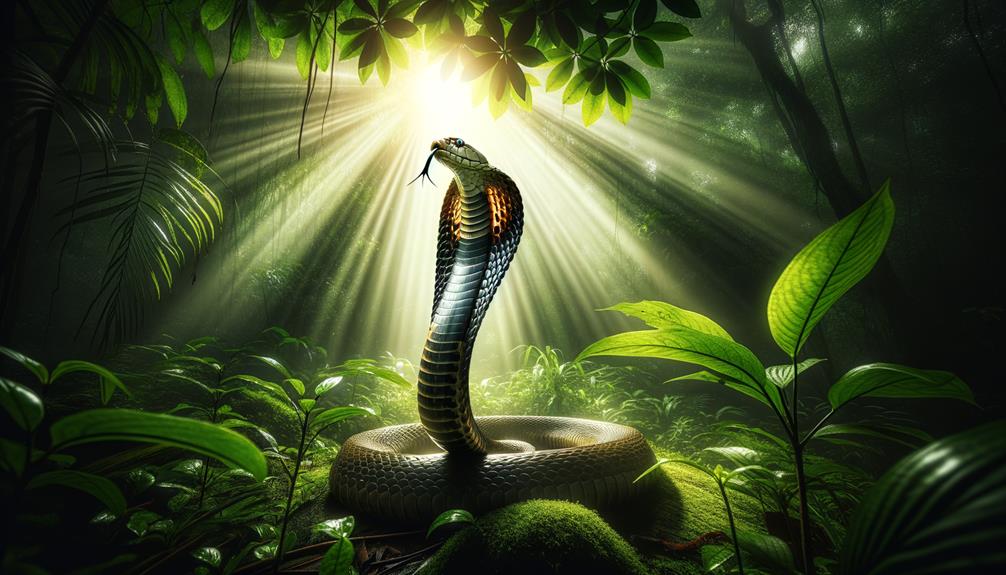
<|start_header_id|> the **king cobra** commands both awe and trepidation across its language
Eastern Brown Snake
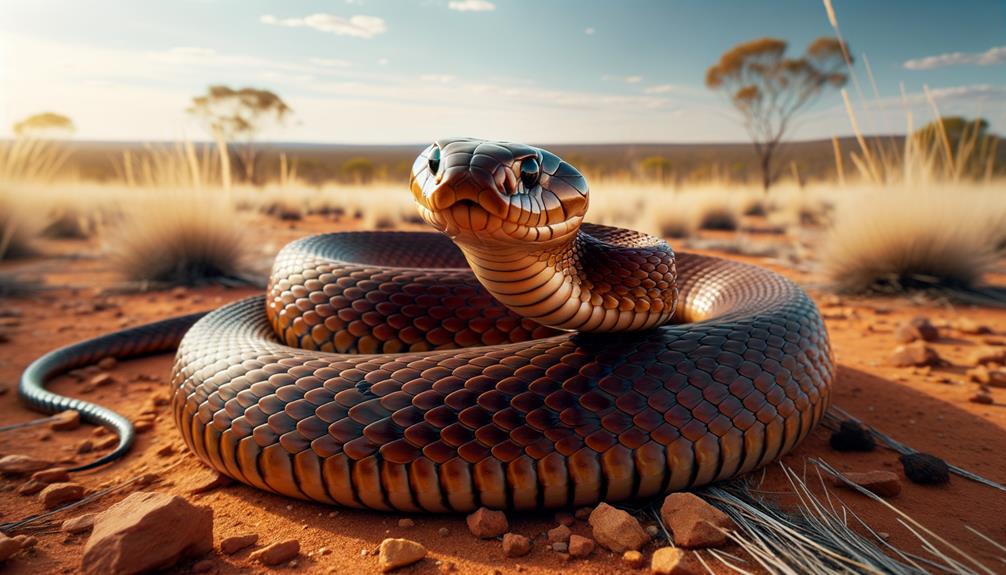
Shifting our focus from the formidable king cobra, we encounter the eastern brown snake, a native of eastern Australia and a leading cause of snakebite fatalities in the region. This snake's bite is a silent killer, often starting painlessly before unleashing a barrage of lethal toxins.
The venom of the eastern brown snake is a potent mix of toxins that can cause both paralysis and internal bleeding. Without swift medical attention, a bite can be fatal within a mere 15 minutes. Despite its relatively shy nature, the eastern brown snake's encounters with humans can be deadly.
- Native to eastern Australia: This snake commonly inhabits grasslands and urban areas.
- Extremely venomous: Ranked among the world's most venomous snakes, it can grow up to 2.5 meters in length.
- Responsible for numerous fatalities: It holds the grim title of causing the most human fatalities from snakebites in Australia.
Frequently Asked Questions
What Reptile Has the Deadliest Venom?
The inland taipan, nicknamed the 'fierce snake', packs the deadliest venom of any reptile. Its potent venom can kill a human being in under an hour, making it a fascinating yet intimidating creature. I'm left in awe of its incredible potency.
What Are the Predators of the Venomous Snake?
Did you know that most mongoose species have a natural resistance to snake venom? Some birds, like hawks, eagles, and owls, also prey on venomous snakes. Even pigs have been known to attack them. What makes these predators so effective is their unique adaptations.
What Is the Most Poisonous Lizard?
The Gila monster is the most poisonous lizard, and its venom packs a punch. Containing a potent neurotoxin, its bite can cause severe pain. Interestingly, this venom has also led to a medical breakthrough – a treatment for type 2 diabetes called exendin-4.
What Is the Most Powerful Reptile in the World?
The saltwater crocodile, a behemoth weighing up to 2,000 pounds, boasts a crushing bite force of over 3,700 pounds per square inch. This massive reptile is the undisputed king of the wild, exuding power and dominance in its natural habitat.


